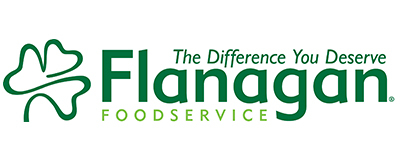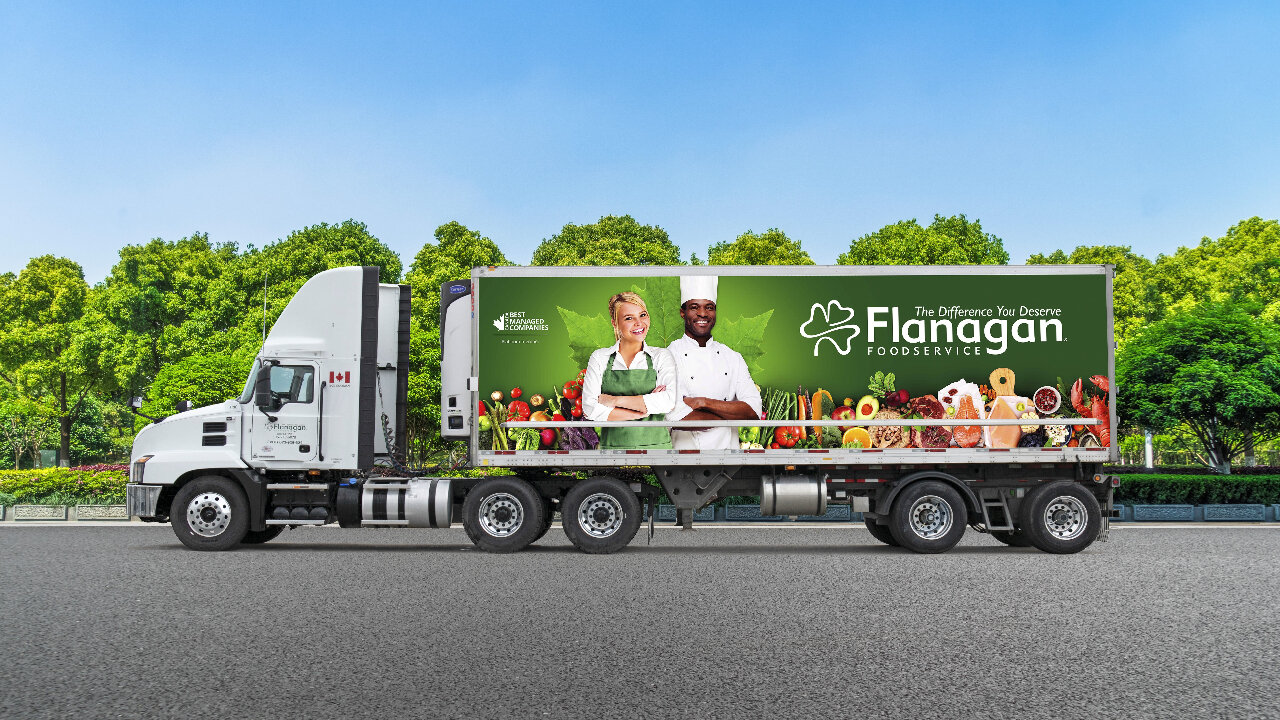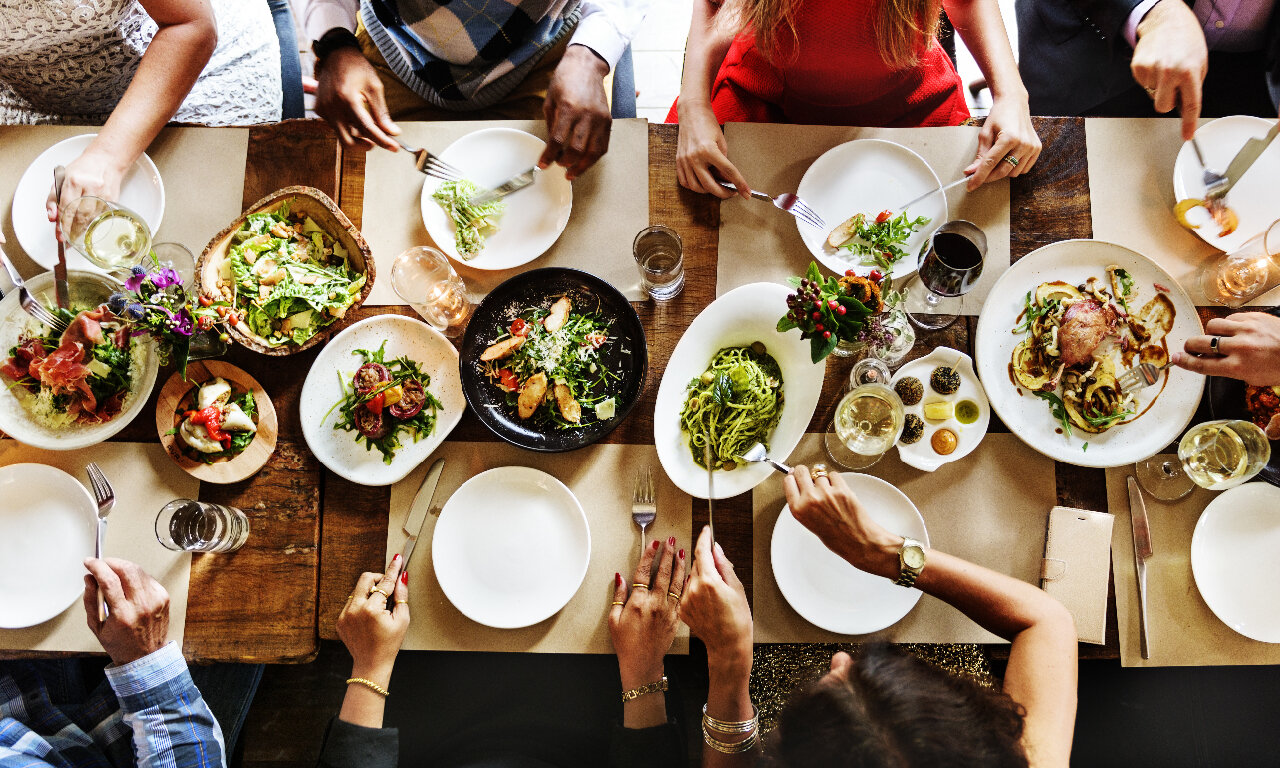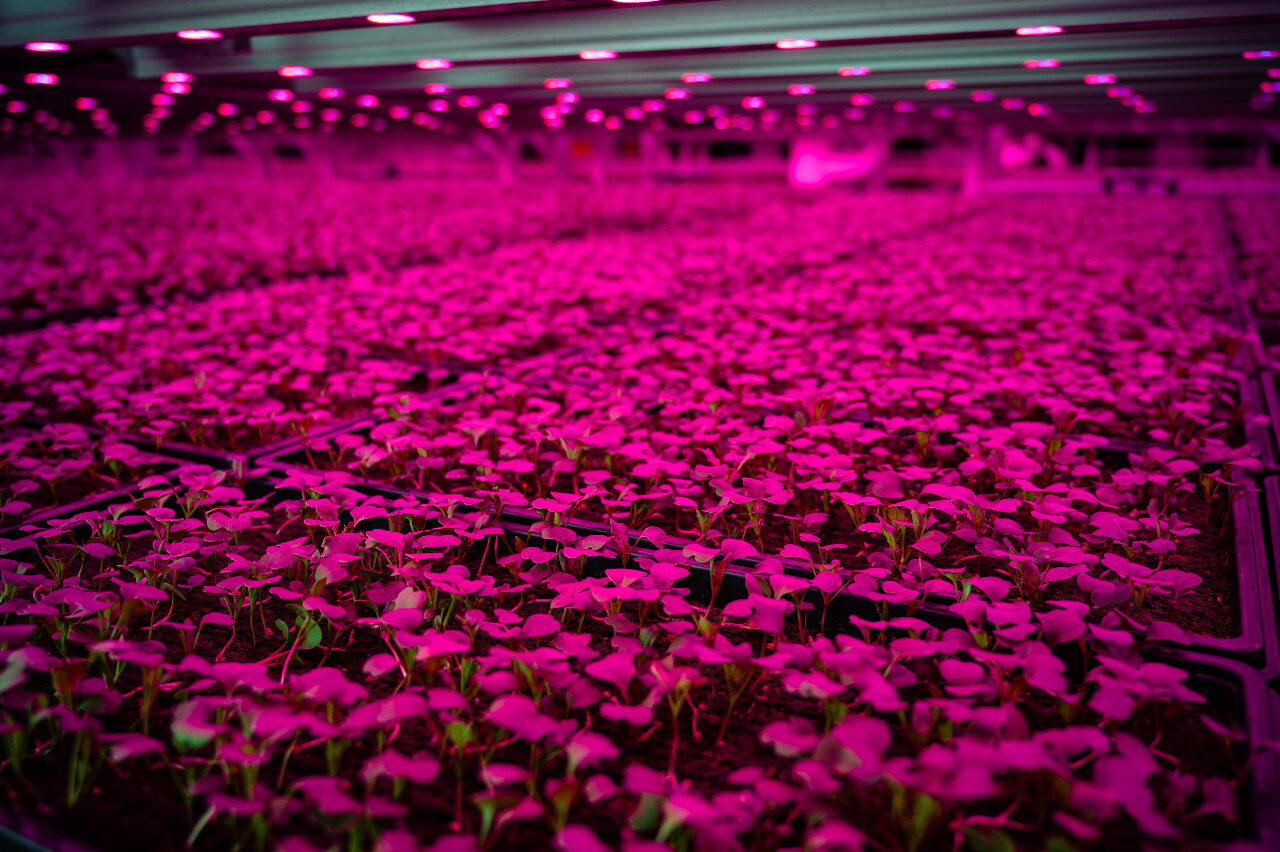
We collect basic website visitor information on this website and store it in cookies. We also utilize Google Analytics to track page view information to assist us in improving our website.
Are you in search of a food service distributor in Ontario? Look no further! In this article, we will explore the role and importance of foodservice distributors, as well as provide a list of the best food distributors in Ontario.
Operating a restaurant or foodservice business requires immense dedication and juggling various responsibilities, such as labour management, supplies, accounting, marketing and growth. However, partnering with the right foodservice distributor can significantly reduce your workload and alleviate some of the stress.
A foodservice distributor plays a crucial role by supplying both food and non-food products to a range of establishments including restaurants, caterers, cafeterias, nursing homes, and hospitals. These distributors receive items in large quantities from various food manufacturers and break them down into case quantities for operators. This ensures that operators only receive the products they need on a single truck, simplifying logistics. Typically, restaurant owners receive their orders from their chosen foodservice distributor on a weekly basis.

In addition to streamlining deliveries, an Ontario food distribution company also offers valuable support and expertise. Your dedicated sales representative will serve as a consultant, bringing you fresh ideas, inspiration, and business strategies. They are there to help you overcome challenges and enhance profitability.
When it comes to maximizing efficiency and success in your foodservice operation, choosing the right foodservice distributor is paramount. Let us guide you through the process and connect you with the top food service distributors serving Ontario.
When it comes to choosing a foodservice partner in Ontario, Flanagan Foodservice stands out as a top choice. It’s the largest Canadian-owned and family-run foodservice distributor in the country, proudly serving Ontario for over 45 years. With distribution centers in Kitchener, Whitby, and Sudbury, Flanagan Foodservice is dedicated to providing restaurants and foodservice businesses of all types with convenience, efficiency, and exceptional service. The Flanagan group of companies also includes Capital Foodservice, F.J. Wadden, Roseland Produce and s.t.o.p. Restaurant Supply.
What really sets Flanagan apart is its commitment to putting customers first. Understanding the unique challenges foodservice operators face, Flanagan offers tailored solutions, flexible ordering, and a vast product selection. With a strong reputation for reliability and personalized service, Flanagan Foodservice is a trusted partner that helps restaurants thrive.

Based in Windsor, Ontario, Morton Wholesale is an independent foodservice distributor that proudly focuses on serving the local business community. The company supplies a variety of food and beverage products to restaurants across Southern Ontario and the Niagara Peninsula, catering to the needs of local businesses.
Stewarts Foodservice, located in Barrie, Ontario, is a Canadian-owned and operated distributor. They provide a wide range of products, including stocks, bases, and frozen varieties, to meet the needs of diverse foodservice operations. Stewarts is recognized for its commitment to quality and personalized customer relationships.
Sysco is an American-owned international foodservice distributor. With approximately 200 distribution facilities, Sysco Canada provides food products and industry solutions to restaurants, healthcare facilities, educational institutions, and lodging establishments. Sysco offers product options and resources for foodservice businesses of all types and sizes.
Gordon Food Service (commonly known as GFS), based in Grand Rapids, Michigan, is a family-owned company with a long history dating back to 1897. Serving a diverse range of customers, including restaurants, healthcare facilities, and schools, GFS offers a wide selection of food products and industry supplies.
Choosing the right foodservice distributor is crucial for the success of any business in the hospitality industry. Here are a few key factors to consider when making this important decision:
It's important to focus on the distributor's reliability and reputation. Look for wholesale food suppliers with a proven track record of delivering quality products on time and with excellent customer service.
Consider the range and variety of products they offer. A good distributor should have a wide selection of options to meet your specific needs.
It's essential to evaluate their pricing structure and terms. Compare prices and consider any additional fees or discounts they may offer.
Furthermore, ensure that the distributor can consistently meet your volume and frequency requirements.
Beyond just supplying products, choose a food distributor that provides value-added solutions to help your business thrive. From menu consultation and trend insights to cost-saving strategies and customer support, pick a company that’s willing to go the extra mile to ensure your success.
Lastly, take into account their delivery capabilities and geographical coverage to ensure they can efficiently serve your location.
By carefully considering these factors, you can choose a foodservice distributor that aligns with your business goals and helps you provide exceptional service to your customers. Do you have any more questions? One of our team members would be happy to help you!

Chefs have always used microgreens as a beautiful finishing touch to garnish their final dish, but did you know that microgreens can add benefits beyond their stunning looks?
GoodLeaf Farms is revolutionizing the way that microgreens are grown and taste through the powers of vertical farming. This innovative way of farming allows for these gorgeous greens to be grown in Ontario year-round, so you never have to worry about seasonality or availability. Their highly specialized growing methods and controlled environments allow for their microgreens to produce intense, delicious flavours that can be used to add to meals and used in creative ways. One of the standout features of Good Leaf products is that they are never touched by pesticides, herbicides, fungicides, or even human hands until they reach their final destination. This commitment to "Pure" farming ensures the utmost purity and quality.

Here's 4 Ways Chefs can use Microgreens for more than just a Garnish:
.jpeg)
No matter the dish, GoodLeaf nutrient-dense microgreens are a simple and creative way for chefs to add flavours and colours to increase customers’ dining experience!"


Nestled amidst the bountiful waters of Ontario’s lakes, rainbow trout has become a prized catch and culinary delight. With the abundance of freshwater resources, Ontario offers an ideal habitat for this cold-water fish to thrive. Let’s dive into the world of Ontario rainbow trout, exploring its characteristics, culinary appeal, and recipe suggestions:
Ontario’s vast network of lakes provides an ideal environment for rainbow trout to
flourish. With clear waters and abundant food sources, these lakes nurture healthy populations of rainbow trout.
Its delicate pink hue and mild flavour lend themselves well to a variety of cooking techniques, allowing chefs to showcase their creativity. The high oil content in the fish enhances its tenderness and imparts a rich, buttery taste.

• Pan-Seared Rainbow Trout with Lemon Butter Sauce: A classic preparation that highlights the natural flavours of the fish. Served with a tangy lemon butter sauce and accompanied by roasted vegetables, this dish offers a delightful balance of freshness and richness.
• Grilled Rainbow Trout with Herb Crust: A simple yet elegant preparation that involves encrusting the fish with a blend of fresh herbs before grilling. The charred exterior adds a smoky depth of flavour, while the moist and flaky flesh remains the star of the dish.
• Rainbow Trout Ceviche: A refreshing and light option for those seeking a vibrant and zesty experience. The fish is marinated in citrus juices, mixed with diced vegetables, and seasoned with herbs.
• Roasted Whole Stuffed Trout: A tantalizing blend of flavours. By stuffing the trout with aromatic ingredients like lemon, garlic, onion, and fresh herbs, then roasting it to perfection, this recipe promises a delightful and flavourful dining experience. Visit caudlescatchseafood.com for the full recipe.
Don’t forget - Highlight the farm-to-table journey through your marketing channels: Emphasize that the rainbow trout is sourced from Ontario’s pristine lakes, connecting customers with the region’s natural beauty and sustainable fishing practices.

Hindsight is 2020, as the old expression goes. Certainly, as we rounded the corner in 2019, the prospect of a bright new year was uppermost in our minds.
Who could have foreseen a pandemic that would upend every aspect of foodservice? But there is a resilience in the industry and a sense of optimism that once we return to some semblance of normality, or at the very least, a new normal, restaurants will shine once again. To get a better read on what’s in store for foodservice, we turned to our data partner, Technomic Inc., to take a deeper dive into the trends for 2021:
Black Lives Matter protests in 2020 spurred calls to action for foodservice companies to fight for social justice and equality. As a result, businesses across the supply chain are committing to working harder to produce meaningful change. We’ll see more conscious efforts to hire, mentor and promote (especially in leadership positions) minority races and ethnicities, as well as women. There will also be an uptick in internal antibias training, partnerships that support minority organizations and donations to social justice-related causes.
BACKGROUND
Stat: Nearly half (46%) of consumers report that it’s important to them that restaurants are engaged in social justice – consistent across all generations. In addition, more than two-fifths (42%) of consumers, including 59% of Gen Zers, express that it’s important to them that restaurants support the Black Lives Matter movement.
Base: 1,000 consumers ages 18+
Source: Technomic Canadian Omnibus consumer survey data
Example: Uber Eats waived delivery fees for consumers ordering from Black-owned restaurants throughout 2020.
As the pandemic rolls into another year, consumers will continue to prioritize safety when making restaurant decisions. They’ll favour operators who earn their trust by always executing strict sanitation and social distancing protocols, such as proper food handling, rigorous restaurant cleaning and limited indoor seating. This will lead to more touchless digital menu boards, contactless ordering and delivery options, pre-packed and grab-and-go items, tamper-proof packaging, and high-quality air filtration and ventilation systems.
BACKGROUND
Stat: Nearly two-fifths (38%) of consumers think restaurants could do a better job promoting their safety and sanitation protocols.
Base: 1,000 consumers ages 18+
Source: Technomic Canadian Omnibus consumer survey data
In anticipation of a vaccine, operators across the world will innovate highly buzzworthy products to attract guests back into restaurants and stand above the competition. This is a tactic we’ve seen Asian markets employ during a previous easing of lockdown restrictions. Compelling menu development will include inventing wacky mashups and next-level collaborations, expanding into new mealparts and dayparts, and investing in product improvements.
BACKGROUND
Stat: Most consumers agree that they are likely to visit a fast-food (65%) or fast-casual (71%) restaurant that they don’t typically patronize if it has a unique limited-time offer.
Base: 551 and 701 consumers ages 18+
Source: Technomic Ignite consumer data featuring the 2020 Canadian Future of LSR Fast Food & Fast Casual Consumer Trend Report
Example: Woodhouse Brew Pub launched a modern take on nostalgic TV dinner trays with its “Hungry Friends” reheatable meals. (Toronto)
COVID-19 has motivated both consumers and operators to quickly embrace foodservice technologies that offer contactless and/or touchless aspects, including mobile apps, ordering kiosks and digital menu boards. Operators will test more advanced technologies in the coming year as consumers continue to prioritize safety and convenience. On the horizon innovations will include more GPS tracking, voice ordering via an AI assistant, facial recognition systems and drone delivery to provide frictionless off-premise services, as well as greater investments in robotics to maximize labour efficiencies for both back and front of house operations.
BACKGROUND
Stat: Nearly a quarter (23%) of consumers 18-34 strongly agree that if available, they would be interested in having items delivered via innovative delivery technologies (e.g., drones, self-driving robots, etc.).
Base: 1,282 consumers who ever order off-premise
Source: Technomic Ignite consumer data featuring the 2020 Canadian Delivery and Takeout Consumer Trend Report
Example: Swiss Chalet updated its mobile app. The chain’s new version of its mobile app features an updated interface where guests can save their favorite items, collect coupons in the Coupon Wallet, opt in or out of receiving silverware with their order, tip ahead and more. It also includes a “giving” feature where customers can gift Swiss Chalet meals to friends and family.
Operators will increasingly look to black and deep purple ingredients in 2021. All of these ingredients provide a wow-factor colour when featured in food and drink, and some also have either umami flavour profiles or immunity-boosting benefits (due to their anthocyanin-rich capabilities). Ingredients to watch include dark berries, such as saskatoon serviceberry and blackcurrant; purple corn and potato; black salt, kale and gnocchi; activated charcoal cocktails; squid ink beyond pasta dishes; and ingredients in ashes, such as ash-covered cheeses, onion or leek ash, etc.
BACKGROUND
Example: RGE RD’s Purple City cocktail with Park Distillery vodka, Hanson Distillery cherry rye, maple saskatoon berries and plum bitters (Edmonton)
Movements to support Canada’s economy will grow as borders remain closed and small businesses continue to struggle. We’ll see operators increase their sourcing from area suppliers and visibly promote these collaborations on menus. At the same time, community-minded consumers will actively seek to patronize restaurants where their money also helps support local farmers and other purveyors. Driving this effort will be distributor partnership with local suppliers and producers that help spread awareness of their products and fulfill growing patron demands.
BACKGROUND
Stat: Approximately two-thirds of consumers (67%) say they are more likely to purchase and/or are willing to pay more for food and beverage that is locally sourced.
Base: 355 consumers ages 18-73
Source: Technomic Ignite consumer data featuring the 2020 Canadian Generational Consumer Trend Report
Example: The Pickle Barrel celebrated Ontario farmers by rolling out LTOs featuring local ingredients, including rainbow trout from Manitoulin Island and corn from Waterford
Off-premise services have served as a lifeline for operators throughout the pandemic. But as consumers grow accustomed to the perks of these occasions (i.e., convenience, speed and contactless experiences), operators are hedging their bets by incorporating off-premise into their long-term strategy to offset future dine-in disruptions. We’ll see an uptick in new and remodeled stores that emphasize takeout, delivery, drive-thru and curbside pickup, as well as new and upgraded technology to make these services seamless and distinctive.
BACKGROUND
Stat: Approximately a third of consumers say they plan on ordering food and beverage for takeout (38%) and delivery (31%) more in 2021 than they did in 2020.
Base: 1,000 consumers ages 18+
Source: Technomic Canadian Omnibus consumer survey data

Lord Elgin Fish & Chips, a family-owned fish and chips restaurant located in Port Elgin, Ont., will be celebrating 40 years of serving the community this May. Owner-operator Mike Lemcke grew up in the business and, with his wife Janet, bought out his parents 22 years ago. The 3,500 sq. ft. restaurant with 145 seats appeals mainly to a family and seniors crowd.
Mike spoke to Brand Points Plus about how Lord Elgin Fish & Chips has been able to pivot quickly from dine-in with some takeout to 100% takeout:
What was business like for you before the coronavirus hit?
Winter is normally slow for us and we close for five weeks at Christmas, usually reopening the last week or two of January. We had just reopened and managed to get through February. Then in March just as business started to pick up, COVID-19 hit. Usually each month gets busier from March to June, then July and August are crazy busy, come September things start to slow down again, and each month from September to December things get considerably slower. Takeout sales generally varied from 15%-25% of our daily business.
When did you see the handwriting on the wall and decide to convert to takeout and delivery?
We converted to takeout on the Tuesday the Ontario government mandated dining rooms to close. We still haven’t started delivery as we have set up a very safe pickup procedure that’s working well. If we see that people are no longer willing to pick up their orders, we will consider delivery. [Check out Lord Elgin's Facebook page to see how easy they've made it to pick up and go.]
What was your first reaction when you realized you’d have to make this change?
We knew we could make the change quickly and just had to perfect the system. We had to adjust it a few times as we kept finding little things to change to make everything run smoother.
What steps did you have to take to convert your operation?
Five years ago, we developed a frozen battered fish product that customers can buy and cook in their oven. We have slowly increased the sales each year. This product has been very popular since restaurants had to convert to takeout only. We have added our homemade frozen fries to this product line temporarily.
What changes have you had to make to staffing?
We decided to lay off our staff and run the business with just our family of four. We have many kitchen staff who live with vulnerable people so they didn’t want to work. We decided to open only Thursday, Friday & Saturday, 12-7, to funnel as much business as we can into three days to limit our overhead. We took a few items off the menu with short shelf life to limit the amount of food waste.
What challenges have you faced in converting to takeout?
No real challenges, but we continue to rearrange the kitchen to make it more efficient for takeout. It has been interesting seeing how quickly and easily we were able to adapt to takeout only. Luckily, we already did takeout so we had all the packaging figured out already. We got the word out to our customers that we were switching to takeout mostly through Facebook and our big LED road sign. We make sure we attach a special thank you to each order for the support during this time.
Are your efforts bearing fruit? How have you measured success?
We are very happy with where we are at this point. Obviously, our sales are down considerably, but so are our expenses.
Lord Elgin Fish & Chips' top tips:
This post was shared in connection with Brand Points Plus, a FREE loyalty program for independent operators. Easily collect points for amazing rewards, if you're not a member - we highly recommend you become one.
Learn more about Brand Points Plus

